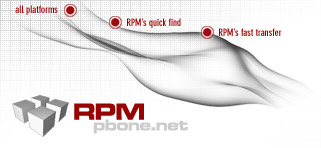| Name : grads
| |
| Version : 2.0.1
| Vendor : obs://build_opensuse_org/home:gbvalor
|
| Release : lp151.4.1
| Date : 2023-11-05 08:21:26
|
| Group : Productivity/Scientific/Physics
| Source RPM : grads-2.0.1-lp151.4.1.src.rpm
|
| Size : 18.18 MB
| |
| Packager : (none)
| |
| Summary : The Grid Analysis and Display System (GrADS)
|
Description :
The Grid Analysis and Display System (GrADS) is an interactive desktop
tool that is used for easy access, manipulation, and visualization of
earth science data. GrADS has two data models for handling gridded and
station data. GrADS supports many data file formats, including binary
(stream or sequential), GRIB (version 1 and 2), NetCDF, HDF (version 4
and 5), and BUFR (for station data). GrADS has been implemented worldwide
on a variety of commonly used operating systems and is freely distributed
over the Internet.
GrADS uses a 5-Dimensional data environment: the four conventional dimensions
(longitude, latitude, vertical level, and time) plus an optional 5th dimension
for grids that is generally implemented but designed to be used for ensembles.
Data sets are placed within the 5-D space by use of a data descriptor file.
GrADS handles grids that are regular, non-linearly spaced, gaussian, or of
variable resolution. Data from different data sets may be graphically overlaid,
with correct spatial and time registration. Operations are executed interactively
by entering FORTRAN-like expressions at the command line. A rich set of built-in
functions are provided, but users may also add their own functions as external
routines written in any programming language.
Data may be displayed using a variety of graphical techniques: line and bar graphs,
scatter plots, smoothed contours, shaded contours, streamlines, wind vectors,
grid boxes, shaded grid boxes, and station model plots. Graphics may be output
in PostScript or image formats. GrADS provides geophysically intuitive defaults,
but the user has the option to control all aspects of graphics output.
GrADS has a programmable interface (scripting language) that allows for sophisticated
analysis and display applications. Use scripts to display buttons and dropmenus as
well as graphics, and then take action based on user point-and-clicks. GrADS can be
run in batch mode, and the scripting language facilitates using GrADS to do long
overnight batch jobs.
Author:
Jennifer M. Adams, Reinhard Budich, Luigi Calori, Brian E. Doty, Wesley Ebisuzaki,
Mike Fiorino, Tom Holt, Don Hooper, James L. Kinter, Steve Lord, Gary Love,
Karin Meier, Matthias Munnich, Uwe Schulzweida, Arlindo da Silva, Michael Timlin,
Pedro Tsai, Joe Wielgosz, Brian Wilkinson, and Katja Winger.
|
RPM found in directory: /packages/linux-pbone/ftp5.gwdg.de/pub/opensuse/repositories/home:/gbvalor/openSUSE_Leap_15.1/x86_64 |
